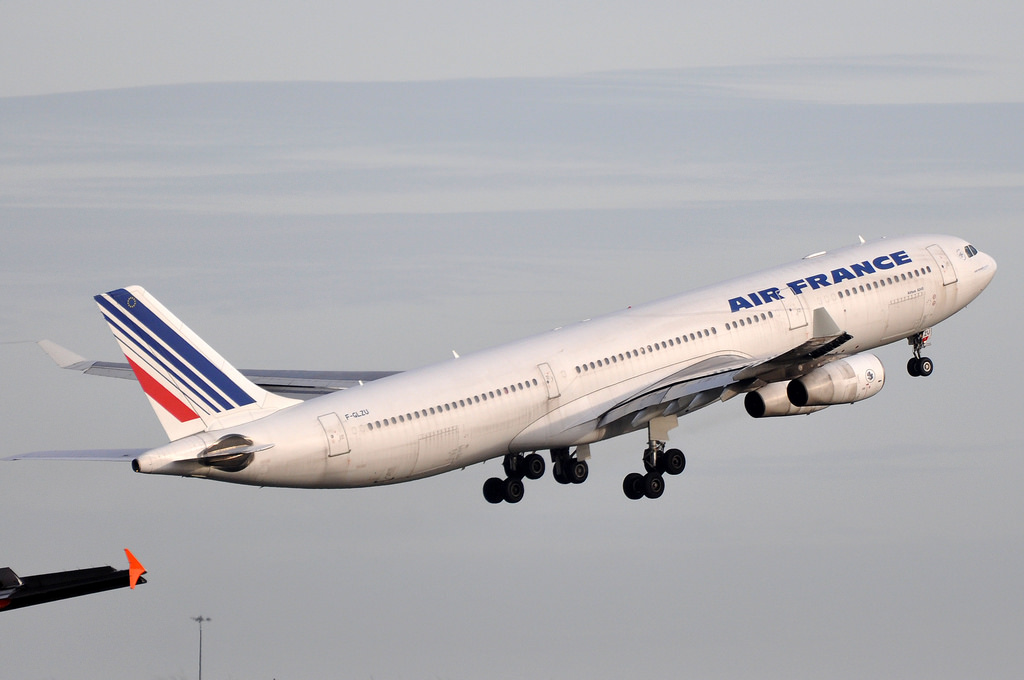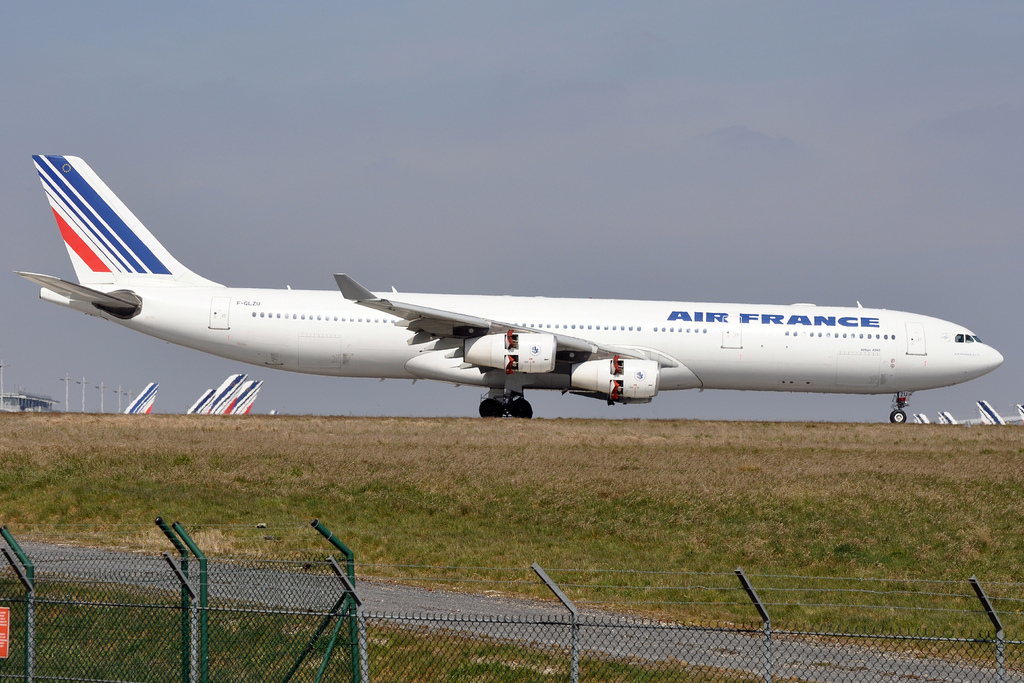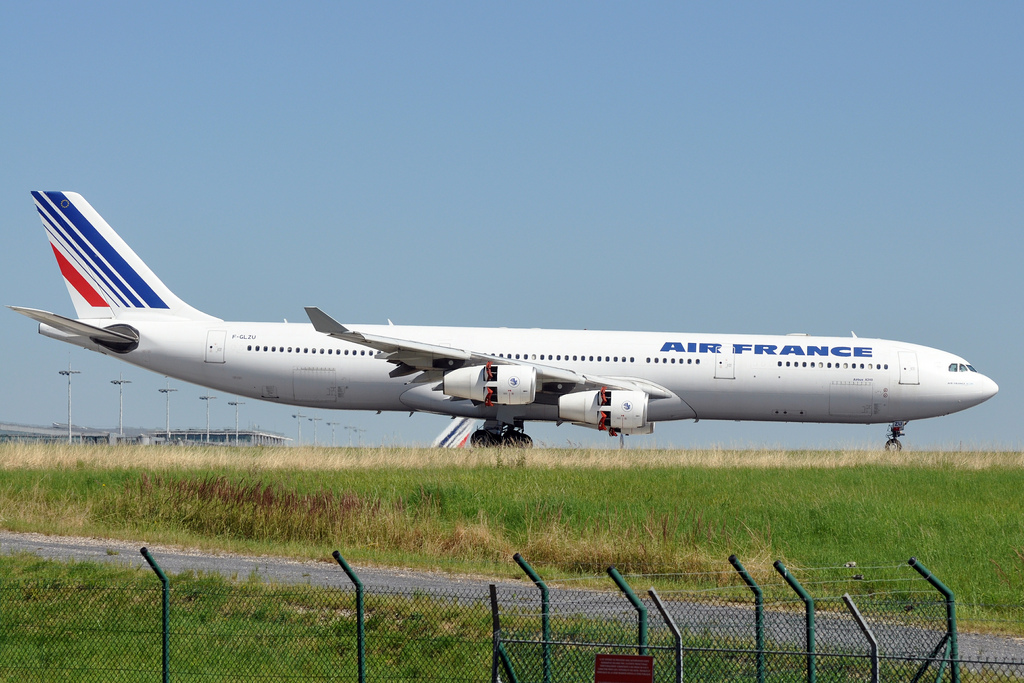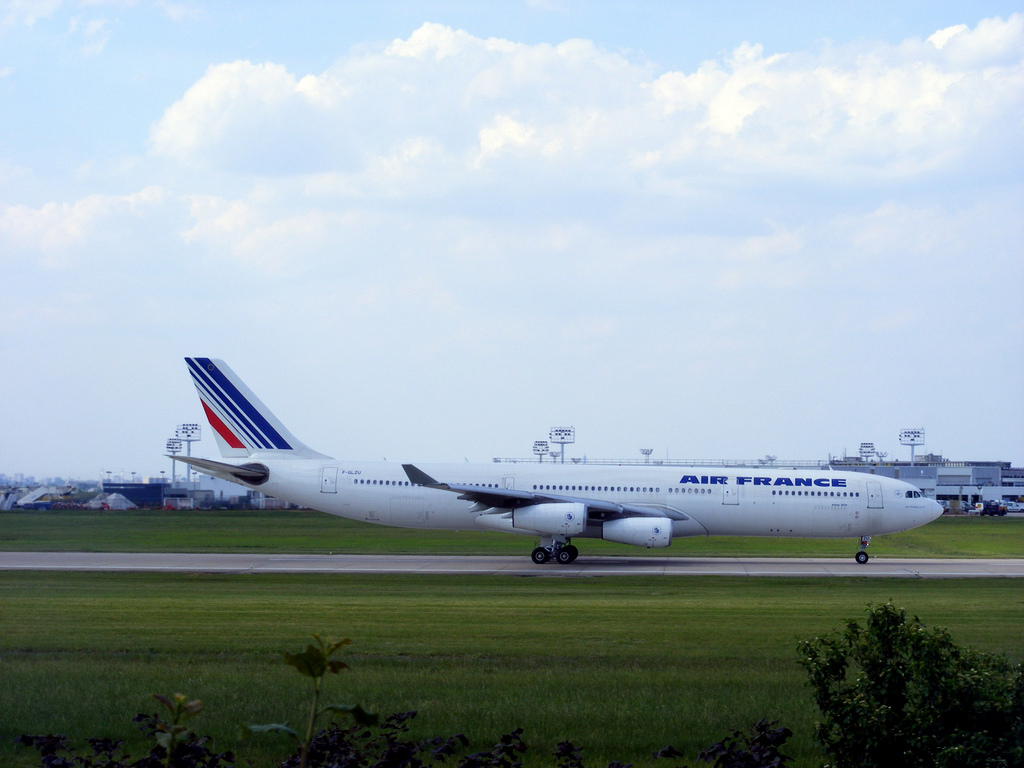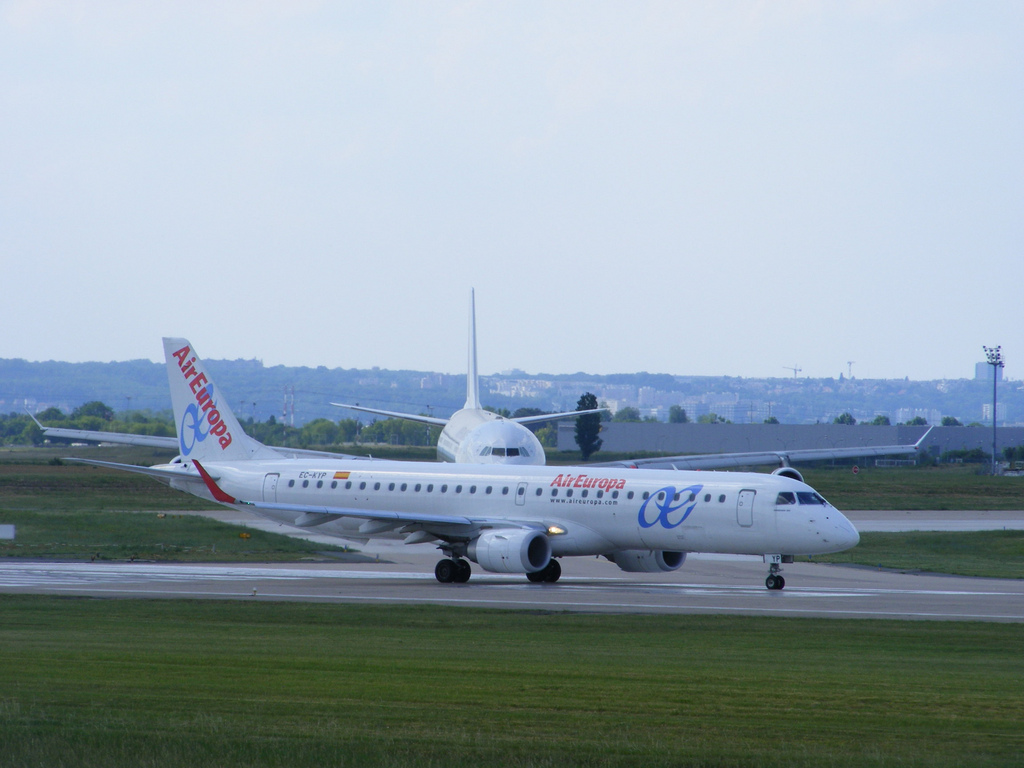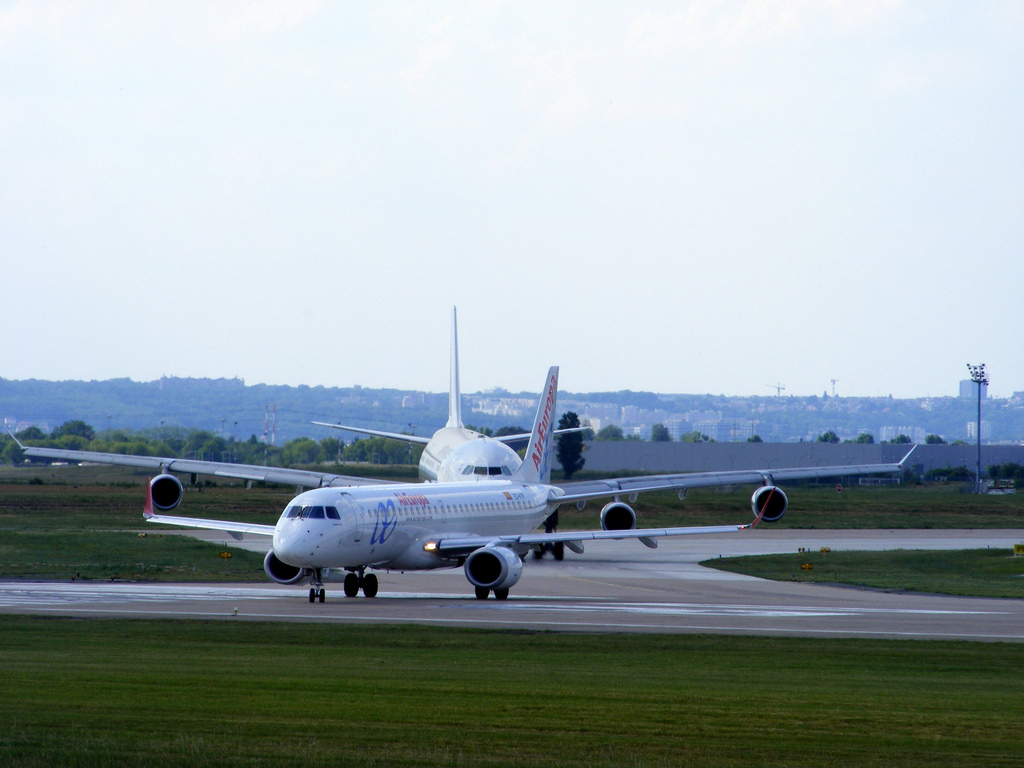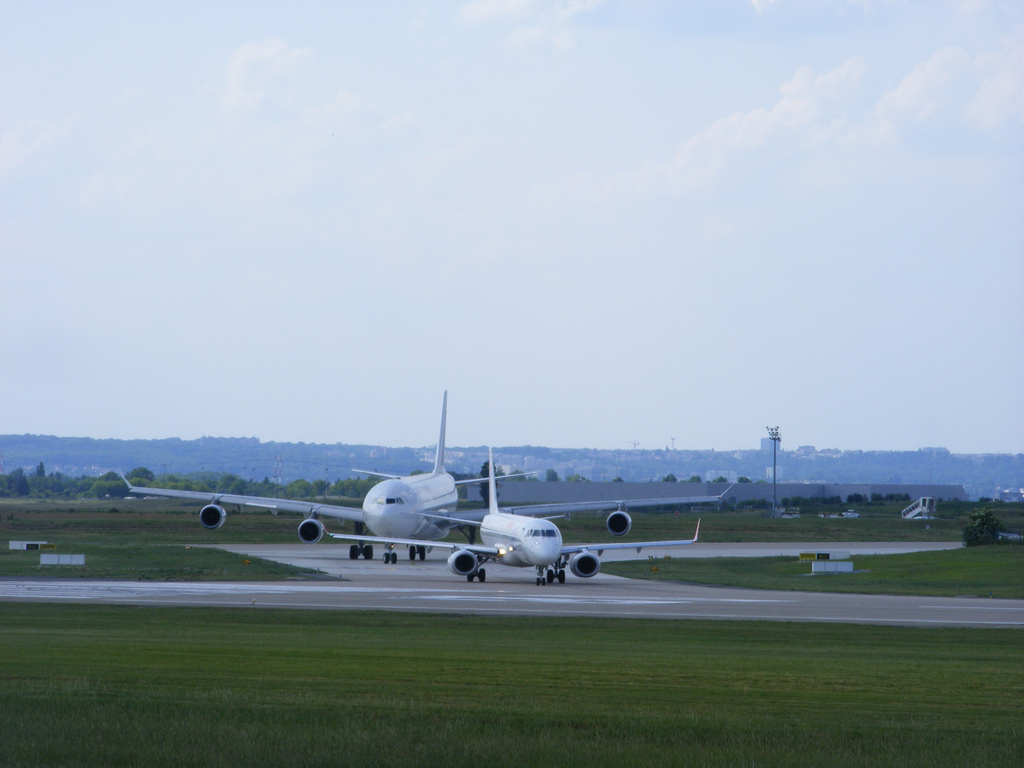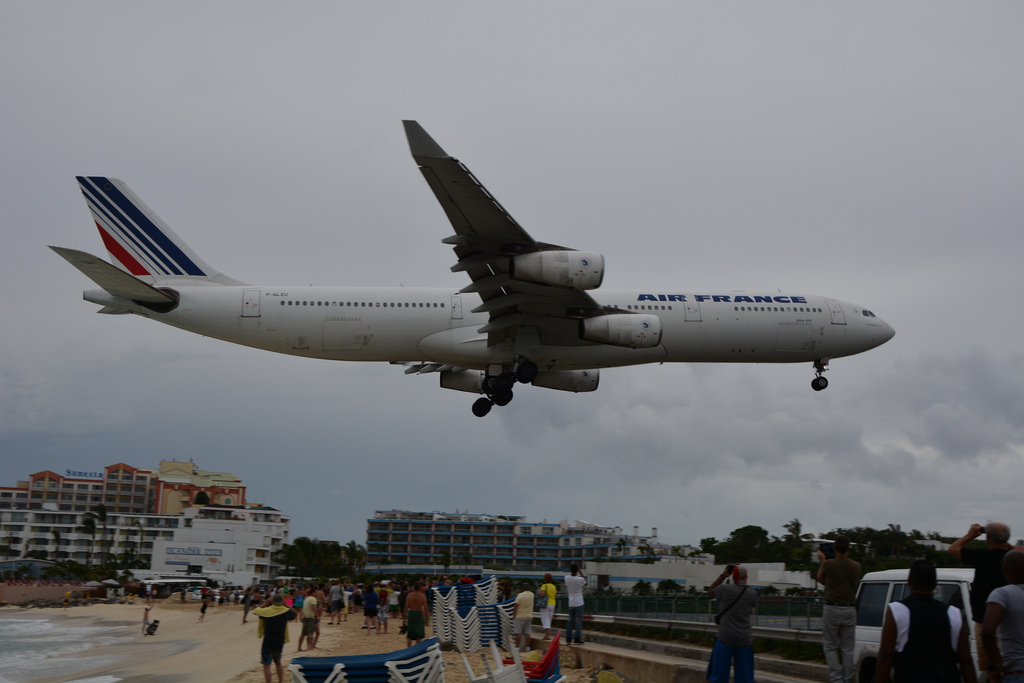Air France A343 at Paris on Mar 13th 2012, intercepted mirror glide slope, large pitch oscillations and approach to stall
Last Update: September 13, 2013 / 16:06:15 GMT/Zulu time
Incident Facts
Date of incident
Mar 13, 2012
Classification
Report
Airline
Air France
Flight number
AF-3093
Departure
Bamako, Mali
Destination
Paris Charles de Gaulle, France
Aircraft Registration
F-GLZU
Aircraft Type
Airbus A340-300
ICAO Type Designator
A343
The French BEA released their final report in French (English version released on Sep 13th 2013) concluding the probable causes of the serious incident were:
- the inadequate monitoring of the aircraft's trajectory by both air traffic control and the crew while conducting a CATIII approach under radar guidance
- the decision of the crew to continue the approach although the aircraft had crossed the final approach point above vertical profile
Contributing factors were:
- the absence of visual cues on the radar screen of air traffic control when aircraft intercept the vertical profile below 5000 feet MSL
- the inappropriate methode of intercepting the glideslope from above used by the crew
- the capture of a side band/mirror glideslope by the autopilot which resulted in an excessive pitch increase
- fatigue by both controllers and crew which may have contributed to the serious incident
The BEA complained that the recordings of the cockpit voice recorder had already been overwritten when the BEA was notified of the incident. The investigation such had to rely on data off the quick access data recorder, radar data, the ATC recordings and testimonies by controllers and crew.
The aircraft was maintaining FL090 about 30nm before the runway threshold with the autopilot's lateral channel in HDG mode, the vertical mode in ALT and autothrust in speed mode maintaining 250 KIAS, the crew contacted approach at that time and was cleared to intercept the localizer 08R followed by the instruction to descend to FL080. At about that time the aircraft crossed the vertical profile from below to above the profile. The aircraft was subsequently cleared to descend to FL060, the autopilot's vertical channel and autothrust engage in OP DES mode, the lateral channel captures and tracks the localizer. The aircraft was at 7220 feet MSL about 1275 feet above vertical profile at 17.5nm before the runway threshold, at that point the controller instructed to maintain a speed of 200 IAS or greater, the aircraft is still doing 250 KIAS. The crew inquires for further descent, the controller apologizes for forgetting and clears the aircraft to descend to 3000 feet and the ILS approach runway 08R. The crew selected 220 KIAS and 3000 feet into the flight control unit (FCU), the autoflight systems maintain the open descent mode. The speed as well as the rate of descent reduce (tracking selecting speed has priority) resulting in an ever increased deviation above the vertical profile, the crew applied speed brakes. After the aircraft had slowed to 220 KIAS the rate of descent increased to 1840 feet per minute reducing the deviation (to follow the 3 degrees glidepath a rate of 1100 feet per minute would be needed).
When the aircraft was 10nm out descending through 5500 feet the controller instructed to maintain a speed of 160 KIAS or greater and handed the aircraft off to tower, but did not inform tower that the aircraft was above the vertical profile. The crew selected 183 KIAS target speed and selected the flaps to position 1, once again the rate of descent is reduced by the autopilot and the deviation from profile increased again resulting in the sequence of events already described in the initial paragraph.
The BEA reported depending on the altitude assigned by ATC to intercept the ILS the final approach point is 14nm out at 5000 feet MSL, 11nm at 4000 feet MSL, 8nm at 3000 feet and 5nm out at 2000 feet MSL. The radar screen of the controllers provide a visual cue only for intercepting the final approach at 5000 feet although controllers are permitted to assign other altitudes to permit separation of simultaneous parallel approaches. The ATC procedures require, with low visibility procedures in use, that the aircraft should reach a speed of 180 KIAS or less at 15nm before touchdown and a speed of 160 KIAS or less before intercepting the glidepath.
When the autopilot activated the capture glideslope mode, the aircraft would already have needed to descend at an angle of 10 degrees to reach the runway and was consequently already above the 9 degrees side band of the glideslope transmitter, in which the deflections would be reversed by design, above 9 degrees angle the indications would demand an upward correction causing the autopilot to command the large pitch increase until the crew disconnected the autopilot.
5 safety recommendations were released as result of the investigation.
Incident Facts
Date of incident
Mar 13, 2012
Classification
Report
Airline
Air France
Flight number
AF-3093
Departure
Bamako, Mali
Destination
Paris Charles de Gaulle, France
Aircraft Registration
F-GLZU
Aircraft Type
Airbus A340-300
ICAO Type Designator
A343
This article is published under license from Avherald.com. © of text by Avherald.com.
Article source
You can read 2 more free articles without a subscription.
Subscribe now and continue reading without any limits!
Read unlimited articles and receive our daily update briefing. Gain better insights into what is happening in commercial aviation safety.
Send tip
Support AeroInside by sending a small tip amount.
Related articles
France A343 at Bogota on Mar 11th 2017, abnormally long takeoff run
An Air France Airbus A340-300, registration F-GLZU performing flight AF-423 from Bogota (Colombia) to Paris Charles de Gaulle (France) with 262…
France A343 at Douala on Nov 28th 2017, engine shut down in flight, reports of fire in Cameroon media
An Air France Airbus A340-300, registration F-GLZU performing flight AF-953 (sched. dep Nov 27th, act. dep Nov 28th) from Douala (Cameroon) to Paris…
France A359 at Buenos Aires on Nov 20th 2025, smell of smoke on board
An Air France Airbus A350-900, registration F-HTYT performing flight AF-411 from Buenos Aires Ezeiza,BA (Argentina) to Paris Charles de Gaulle…
France A359 near Munich on Nov 9th 2025, burning odour in cockpit
An Air France Airbus A350-900, registration F-HUVC performing flight AF-264 from Paris Charles de Gaulle (France) to Seoul (South Korea), was enroute…
France B773 over Switzerland on Oct 24th 2025, heat in the cabin
An Air France Boeing 777-300, registration F-GZNG performing flight AF-652 from Paris Charles de Gaulle (France) to Saint Denis (Reunion) with 312…
France A320 at Amsterdam on Sep 24th 2025, engine problem
An Air France Airbus A320-200, registration F-GKXQ performing flight AF-1741 from Amsterdam (Netherlands) to Paris Charles de Gaulle (France), was…
France A320 at Ajaccio on Aug 20th 2025, turbulence injures 5
An Air France Airbus A320-200, registration F-HBNJ performing flight AF-4236 from Paris Orly to Ajaccio (France), was descending through FL200…
Newest articles
Canada A333 near Winnipeg on Oct 19th 2025, smoke from standby compass
An Air Canada Airbus A330-300, registration C-GKUG performing flight AC-327 from Montreal,QC to Calgary,AB (Canada) with 285 people on board, was…
Batik Malaysia B38M at Melbourne on Nov 25th 2025, engine failure
A Batik Air Malaysia Boeing 737-8 MAX, registration 9M-LRP performing flight OD-178 from Melbourne,VI (Australia) to Denpasar (Indonesia), was…
Subscribe today
Are you researching aviation incidents? Get access to AeroInside Insights, unlimited read access and receive the daily newsletter.
Pick your plan and subscribePartner

ELITE Simulation Solutions is a leading global provider of Flight Simulation Training Devices, IFR training software as well as flight controls and related services. Find out more.
SafetyScan Pro provides streamlined access to thousands of aviation accident reports. Tailored for your safety management efforts. Book your demo today
AeroInside Blog
Popular aircraft
Airbus A320Boeing 737-800
Boeing 737-800 MAX
Popular airlines
American AirlinesUnited
Delta
Air Canada
Lufthansa
British Airways
